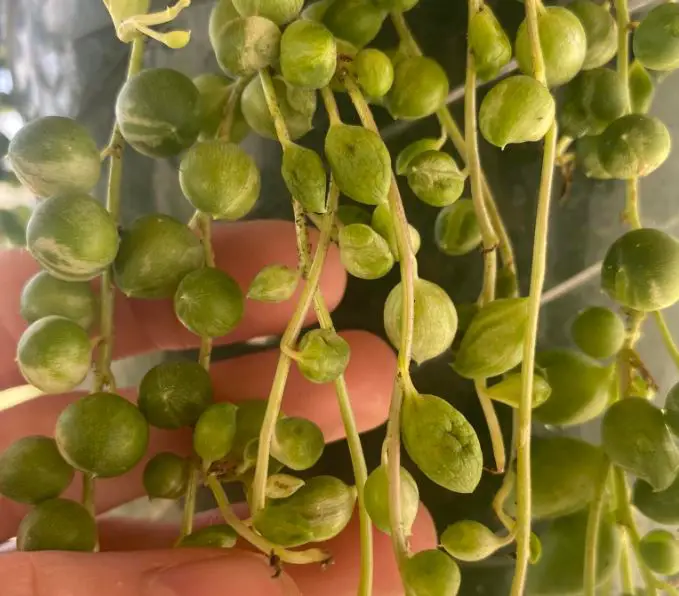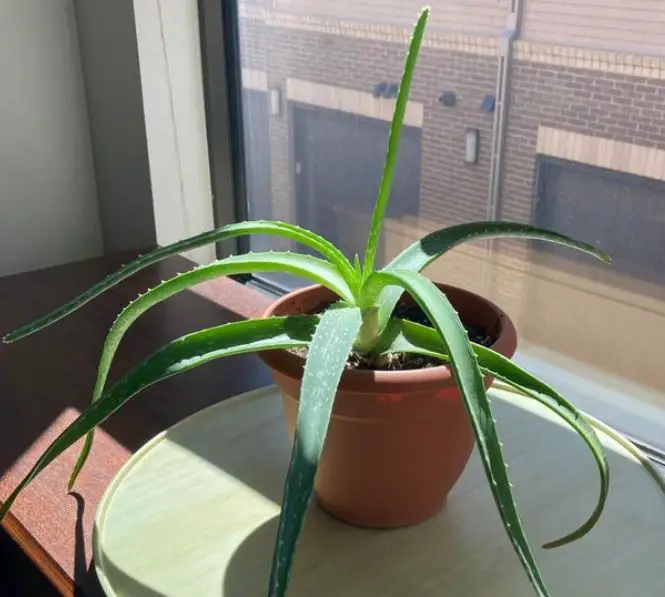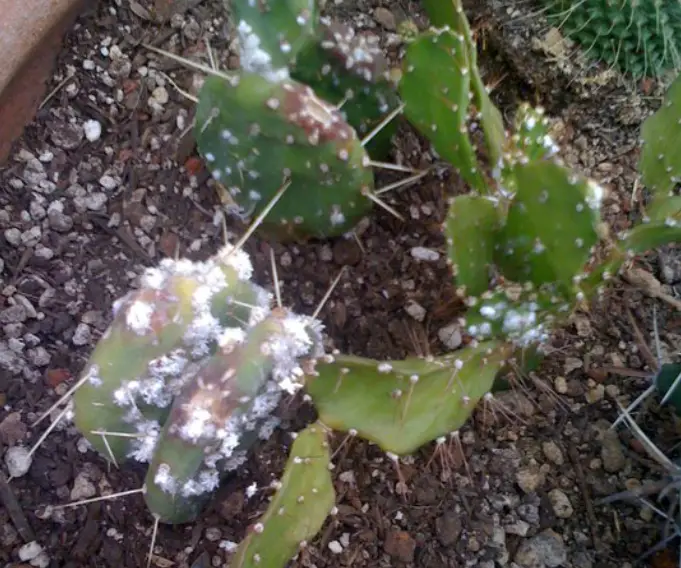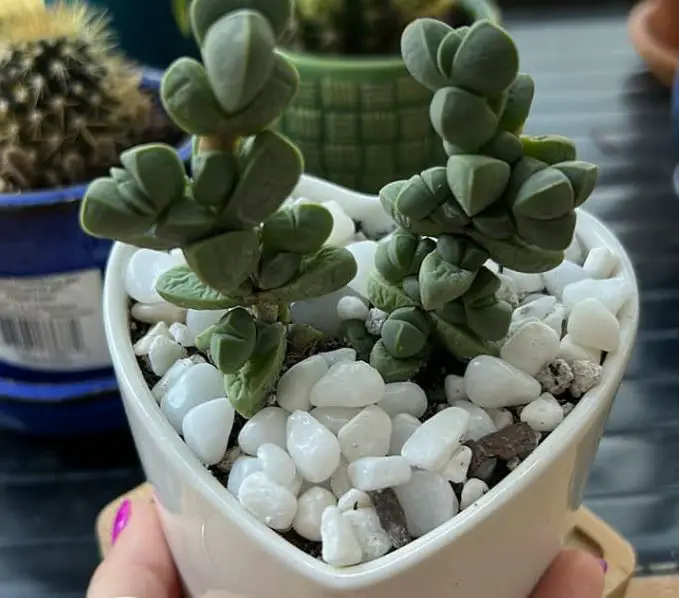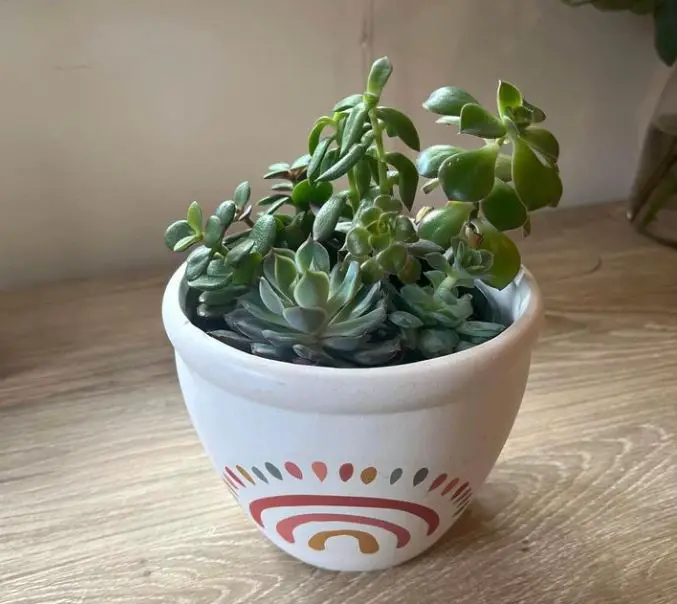Jade Plant Wrinkled Leaves? Reasons and How to Fix
Jade plants (Crassula ovata) are beautiful ornamental succulents that are easy to care for. They can be grown indoors in areas with freeze or outdoors in mild climates. These plants are relatively slow-growing but they can tolerate neglect, drought, and hot conditions.
Healthy jade plants have smooth, fleshy, rounded leaves that are well arranged on thick succulent stems. If jade plant leaves are wrinkled, it’s likely due to dehydration, overwatering, heat stress, frost damage, or insect pests.
In this guide, I’ll explain common reasons behind the jade plant’s wrinkled leaves and what you can do to save the plant.
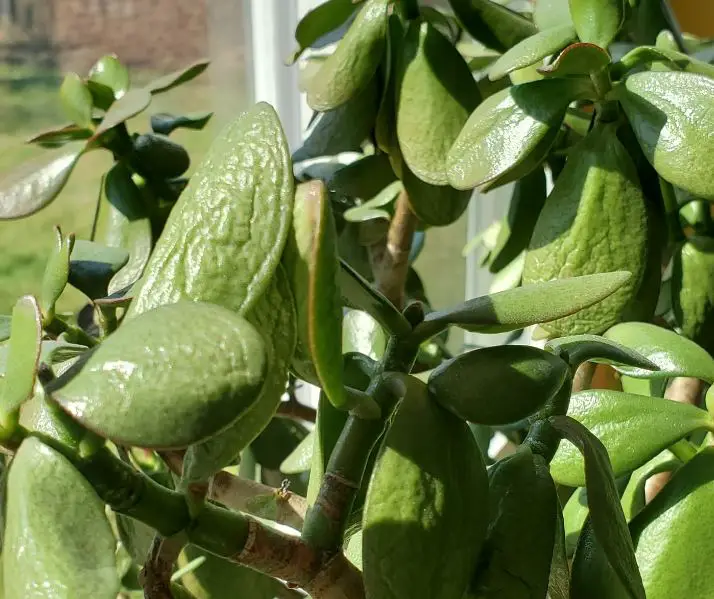
Why jade plant leaves are wrinkled
Wrinkled leaves on the jade plant is commonly a sign of distress. Here are the main reasons for this problem.
Underwatering
Jade plant wrinkled leaves may indicate dehydration. As succulents, jade plants store water in their leaves, stems, and roots. This means they can survive neglect and drought conditions. However, when all the stored water is used up, the plant may shrivel, wilt, and die.
Water is what makes jade plant leaves turgid. Additionally, water is an important resource in photosynthesis, cooling, and transportation of nutrients and mineral salts from the soil into the plant. Not watering your plants enough is like killing them slowly by slowly.
How to fix
If you suspect that your jade plant is wrinkling due to underwatering, simply give it a spray. Water sparingly until the plant recovers from the dehydration. Blasting a stressed-out plant with water may kill it. In that state, the roots are not strong enough to absorb water as needed.
As with all succulents, the jade plant thrives when the soil is allowed to dry out between deep waterings. During the growing seasons (spring and summer) watering should be regular and liberal but the plant should not be allowed to sit in any standing water.
In winter, when the jade plant is semi-dormant, watering should be restricted to about once a month and the soil should remain on the dry side, the University of Wisconsin-Madison explains. During this period, succulents use less water and overwatering may kill them.
Overwatering
Overwatering could be another reason why the leaves on your jade plant are wrinkled. Shriveled or drooping leaves are commonly a sign of excess water in the soil. When overwatered, the jade plant becomes susceptible to root rot, pests, and fungal infections.
Waterlogged soils can stop oxygen from reaching the roots, which makes them suffocate and die. Further, damp soil conditions encourage the growth of fungi that cause root rot. Succulents grown in poorly-draining soils can also be affected by this condition.
How to fix
If you suspect that your jade plant is overwatered, try all the means you can to remove the excess water from the soil. You may tilt the pot so the excess water can drain from the soil or dab it with paper towels. Then, allow the soil to dry out completely before watering again.
Pro Tip: Always insert a finger in the soil to check for moisture level before watering your plants.
If the shriveled plant is not showing any signs of recovery, inspect the roots. If they are mushy and dark, remove the plant from the soil and cut off the damaged parts. Next, repot the plant in the fresh soil mix. When repotting the jade plant, use cactus or succulent mix and a pot with drainage holes.
Root rot is very difficult to treat and there is no guarantee that your plant will recover. If all the efforts are not working, just propagate the jade plant. Obtain a cutting of a healthy stem and plant it in a succulent potting mix. Then water sparingly and place it where it will get bright indirect light.
Heat stress
Although the jade plant prefers full sun, overexposure to direct sunlight can cause heat stress. High temperatures make plants lose excess water through evaporation. As a result, the leaves may get crispy or wrinkled. In excess, the heat can denature the cells and this can kill the plant.
On the other hand, the jade plant becomes leggy when grown in a location that does not receive enough sunlight. So, there is a need to increase lighting either by relocating the plant to a brighter location or by adding artificial grow lights to help supplement the natural light.
How to fix
Move your plant away from direct sunlight or other heat sources such as air conditioners, fireplaces, or furnaces. If the soil is dry, mist the plant and place it in a cool place with bright indirect light. An east-facing window will be a good location to start from.
When introducing a jade plant to direct sunlight, do it gradually to avoid sunburn and the problem of wrinkled leaves. This kind of acclimation can help plants from a greenhouse or a completely shady region to adapt to the new light conditions without any issues.
Frost Damage
Jade plants can suffer severe damage if exposed to extremely low temperatures. These plants grow in USDA hardiness zones 10 through 11 and they don’t possess any tolerance to hard frost. Leaf wrinkling is one of the signs of frost damage and you can save the plant if you act fast.
What to do
Bring the jade plant indoors immediately to stop further exposure to freezing temperatures. Don’t do anything to the plant but make sure it is receiving bright light. It may take several weeks to see the extent of damage to the plant. This is when you can cut off the mushy parts.
Insect pests
Jade plants can be attacked by insect pests such as mealybugs, spider mites, and scale. If not controlled, pests will suck juices from the plant leaves causing them to appear wrinkly. Pests are also conduits for bacterial and fungal infections in plants.
How to treat
If you suspect pests, isolate the affected plant and treat it with neem or insecticidal soap. You can also wash out the plant with a strong strand of water to dislodge the bugs. Contact a nearby nursery or plant specialist if you are not sure of what to do.
Final thought
Jade plants are easy to grow and maintain as long as you abide by a few rules. These plants prefer full sun to bright indirect light, less watering, and well-draining soil. It’s important to inspect the plant regularly and address any underlying problems that may be causing leaves to wrinkle.
My name is Diane M Lewik, and I am the founder of this website. I am a degree holder in plant biology from the University of California – Berkeley. Over years, I have cultivated a vast collection of succulents and I have learned a great deal about how to grow and care for these unique plants.
